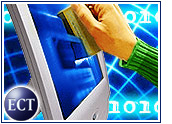
Contradicting earlier findings, a study released Monday reported that U.S. consumers are not heading to online bill payment sites because of recent anthrax mail scares.
The Jupiter Media Metrix (Nasdaq: JMXI) study said that there has been “no noticeable increase in traffic” to the largest online billing sites since September 11th or the anthrax scares, which began about two weeks later.
According to Jupiter, during the last three weeks of October, traffic to bill-paying sites rose 2.8 percent each week, compared to an average of 2.5 percent per week for the last three months. Online bill payment has already grown 12 percent in 2001 over last year’s levels, the firm said.
“Barring a much more widespread level of consumer fear, anthrax issues will not have a significant impact on the growth of electronic bill payment and presentment,” said Jupiter senior analyst Jim Van Dyke.
The Jupiter study contradicted findings released last week by Gartner (NYSE: IT) that there had been a 20 percent spike in online bill enrollment since the first reports of anthrax contamination began to surface.
Jupiter found a long-range trend of steady growth for online payment will continue, regardless of the anthrax situation.
Utilities Boost
Jupiter said that because the average household receives as many as 18 monthly bills and most bill-paying sites are set up to let people pay about six monthly bills, the Web is not the answer to stopping the flow of paper bills, Jupiter said.
Instead, Van Dyke said, growth of online billing began early this year in response to more marketing efforts by utilities, financial institutions and others.
In fact, Jupiter had predicted earlier this year that online bill payment will more than double in 2002, a forecast that the New York research firm said it will not change in response to the terrorist attacks.
“Consumers will steadily embrace online billing as they become more aware of the benefits and the bills become increasingly available online,” Van Dyke said.
Paper Tiger
Meanwhile, Jupiter said that bill-paying services have to improve as well. One current problem: Many online payment services still send paper payment confirmation via traditional mail, meaning the consumer sees no real change at his or her mailbox.
“The demise of many services that deliver paper by truck is inevitable, but mainstream consumers won’t rapidly adopt these services until they are more complete than what is offered today,” Van Dyke said.
Banks Rule
In a separate study, The Yankee Group said Monday that its own survey of online consumers found that most wanted to deal with their banks or other financial institutions when it comes to online bill payment.
More than half of consumers said they prefer to have their banks handle bills on the Web, while 10 percent chose a third-party site such as an Internet service provider or bill handling company.
“Banks, which in the past used a ‘wait-and-see’ approach still have a distinct advantage thanks to the churn-resistant nature of their customer base, and the increased acceptance of online banking among high-end customers,” said Paul Hughes, director of Billing & Payment Application Strategies at Boston, Massachusetts-based research firm the Yankee Group.
























































Social Media
See all Social Media